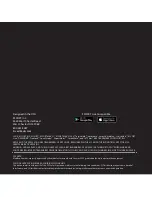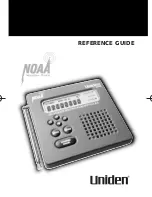
TECHNISONIC INDUSTRIES LIMITED
www.til.ca
TFM-500 Installation & Operating Instructions
TiL 98RE243 Rev. N/C Issue 12
A-2
RESULTS
If the installed system passes all of the applicable EMI tests, then no further action is required. If
interference is observed then the interference must be assessed against the appropriate
standards of airworthiness for the system in question. For example, it is permissible for a VFR
certified GPS to lose navigation capability while the TFM-500 unit is transmitting, providing that it
recovers properly and promptly, but it is not permissible for an IFR Approach certified GPS to be
affected in the same way. A complete discussion of all the standards of airworthiness to be
applied in assessing EMI effects is beyond the scope of this document.
PROCEDURE
A.
Operate the TFM-500 transmitter on the following frequency for at least 20 seconds. Observe the
GPS for any degradation in satellite status or availability or flags.
FREQUENCIES
GPS #1
GPS #2
TFM-500
PASS
FAIL
PASS
FAIL
143.1800 MHz
143.1825 MHz
157.5000 MHz
157.5425 MHz
512.0000 MHz
NOTES:
B.
Determine if the image frequency for the VHF Comm falls within the range of the TFM-500. If so,
select a set of frequencies that will cause the TFM-500 to be set as close as possible to the
image frequency. Any one of the many possible sets will suffice. Record those values in the
spaces provided in the following chart. Modulate the TFM-500 transmitter on the following
frequencies for at least 20 seconds. Listen for any noise or detected audio signals on the VHF
comm.
Example - Bendix/King KY 196A:
The first IF frequency is 11.4 MHz. The L.O. is above the received frequency (high side injection);
therefore, the image frequency is 22.8 MHz above the selected frequency. Set the KY 196A to
120.000 MHz and the TFM-500 to 142.8000 MHz.
















































